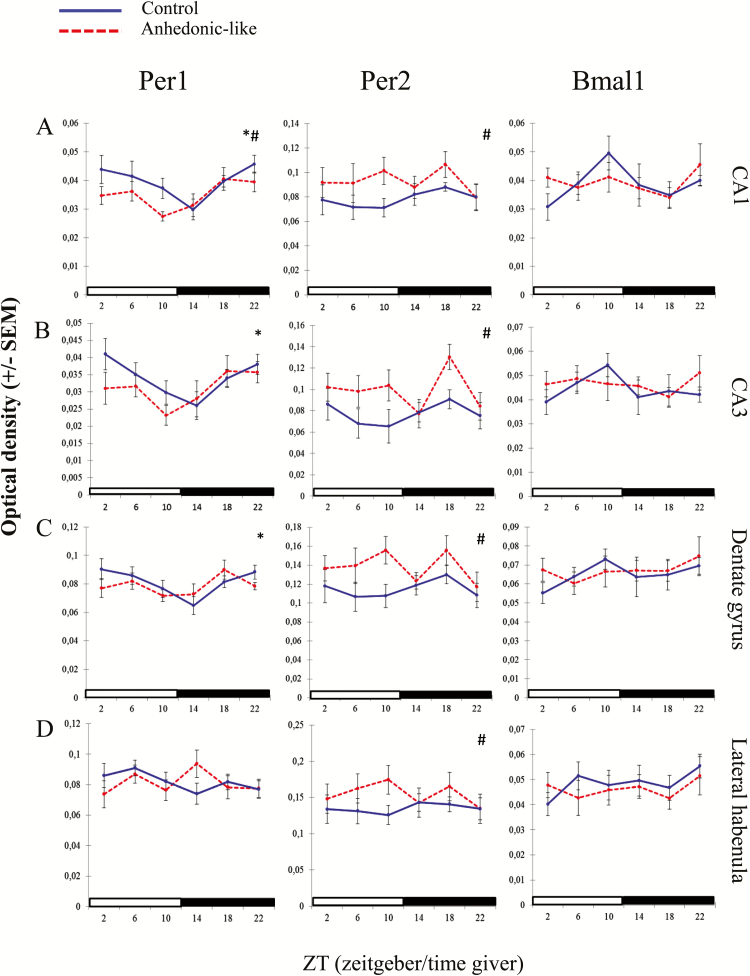Figure 8.
The effect of chronic mild stress (CMS) on clock gene expression in the hippocampus and habenula.
The effect of CMS on the diurnal expression pattern of Per1, Per2, and Bmal1 in the (A) CA1, (B) CA3, (C) dentate gyrus, and (D) lateral habenula in anhedonic-like and control rats under 12h light/dark cycle conditions. The sampling time is indicated as zeitgeber time (ZT), where ZT 0 is defined as a time point when light in facilities switches on. Black bars indicate the dark period. The anhedonic-like group is indicated by a dashed line and the unchallenged control group by a solid line. Data are presented as mean ± SEM (n = 8 rats per time point per group, except for the pineal gland where n = 5–8 in each group). Data for clock genes were subjected to two-way ANOVA to test for significant differences depending on effect of time (*), of CMS (#), and their interaction.

